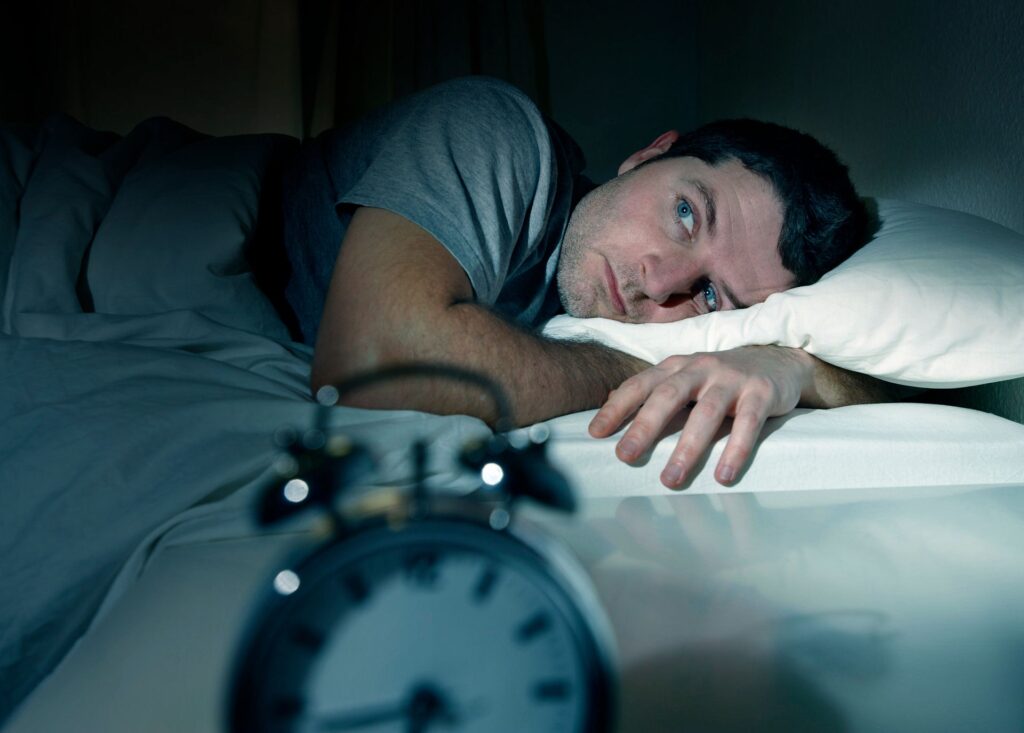Benzos, including the brand name drugs Valium and Xanax, are some of the most commonly prescribed drugs in America today. This is because they have proven to be effective medications in the treatment of panic attacks, anxiety, and seizure disorders. Sadly, even when used as prescribed, these drugs can be highly addictive, eventually requiring benzo addiction treatment to recover from their effects.
If you or a loved one was prescribed but is now struggling with benzo addiction, learn about the benzo withdrawal symptoms timeline, and reach out to our caring team at Bayview Recovery online today or call 855.478.3650 to discuss how our benzo addiction treatment programs can help.
What Are Benzos and What Do They Do?

Benzodiazepines are prescription drugs that, when used correctly, slow down activity in your central nervous system. These drugs treat mental health disorders by producing sensations of relaxation, sedation, and relief. As a result, clients suffering the following issues may see their symptoms reduced:
- Anxiety
- Panic attacks
- Seizure disorders
- Muscle spasms
- Withdrawal symptoms during an alcohol detox
The use of benzos is widespread in the United States today. In fact, the number of adults who filled a benzodiazepine prescription rose by 67%, to a staggering 13.5 million from 1996 to 2013. Furthermore, in a study of over 300,000 people who received opioid prescriptions between 2001 and 2013, the percentage also being prescribed benzos rose to 17% in 2013 from just 9%.
The five most commonly prescribed benzos are:
- Alprazolam (brand name Xanax)
- Lorazepam (Ativan)
- Clonazepam (Klonopin)
- Diazepam (Valium)
- Temazepam (Restoril)
The Signs of Benzo Abuse
The statistics around benzo abuse are alarming but none will make you look into a benzo addiction treatment program more than this one: In 2015, there were nearly 9,000 overdose deaths involving benzodiazepines. This was more than four times as many as in 2002. And the epidemic is only getting worse. The majority of those deaths occurred when benzos were used with other drugs like opioids, but benzos pose a danger on their own, even if they were prescribed to ease your pain.
Some of the common signs of benzo abuse include:
- Muscle weakness and pain
- Loss of coordination and drowsiness
- Pale skin, bluish lips and fingernails
- Nausea and vomiting
- Severely altered mental status
- Loss of consciousness
If you recognize any of these symptoms of benzo abuse, reach out to Bayview Recovery to learn about the dangerous benzo withdrawal symptoms and how the help you need and deserve is available.
The Benzo Withdrawal Symptoms Timeline

Benzo withdrawal happens when a person suddenly stops taking benzodiazepines. It’s important to note that doctors do not recommend quitting cold turkey because the benzo withdrawal symptoms can be severe. If not managed professionally by caring, compassionate, and trained medical professionals, you could relapse and put yourself in danger. Typically, the benzo withdrawal symptoms timeline begins within 24 hours and may last from a few days to a few months.
While we can answer the question, what are benzo withdrawal symptoms, there is not, however, a one-size-fits-all guide to the symptoms, timeline, or severity of a benzo withdrawal. Each person will experience it differently, depending on factors such as:
- Duration and dosage of taking benzos
- Misuse of prescription
- Using the drug without a prescription
- Underlying mental health conditions
- Taking other drugs concurrently
- Misusing other drugs or alcohol
There are three possible phases for benzo withdrawals, each with an estimated timeline.
1. Early Withdrawal
Early or immediate benzo withdrawal symptoms are sometimes called rebound symptoms. These occur shortly after you stop taking benzodiazepine drugs. Withdrawal symptoms from short-acting drugs like Xanax may come on faster than benzo withdrawal symptoms from Valium and other long-acting benzos.
During the early stage, you may notice benzo withdrawal symptoms mimicking the condition that the drug was originally prescribed to treat. For example, your symptoms of anxiety or insomnia may come back or get worse without taking more benzos.
2. Acute Withdrawal
Moving along the benzo withdrawal symptoms timeline, acute withdrawal begins after the early benzo withdrawal symptoms. This is typically within a few days of your last use of benzos and the symptoms generally last 5–28 days.
The majority of benzo withdrawal symptoms occur in this portion of the benzo withdrawal symptoms timeline, and this phase is the most difficult too. During the acute withdrawal phase, doctors may monitor you and recommend other drugs to control the most challenging benzo withdrawal symptoms.
3. Protracted Withdrawal
Most benzo withdrawal symptoms will fade away after the acute withdrawal phase but lingering side effects are possible. These are called protracted benzo withdrawal symptoms.
Research indicates that 10–25% of individuals who use benzos for an extended period of time will experience benzo withdrawal symptoms for 12 months or longer.
Protracted withdrawals may cause their own set of symptoms, including:
- Insomnia
- Anxiety
- Depression
- Lack of concentration
- Loss of sex drive
- Extreme mood swings
These benzo withdrawal symptoms may appear without warning and can dramatically impact your life. Professional medical support and therapy found in a benzo addiction treatment program like the one available at Bayview Recovery may be able to mitigate the withdrawal symptoms and help guide you toward a lifelong recovery.
Learn More at Bayview Recovery
Now that you know the answer to the question, what are benzo withdrawal symptoms, reach out to us today to learn more about how we can help you break the cycle of benzo addiction. Contact us using our secure online form or call us confidentially at 855.478.3650.

 Dr. Dave Cundiff, MD, MPH (Medical Reviewer)
Dr. Dave Cundiff, MD, MPH (Medical Reviewer)






